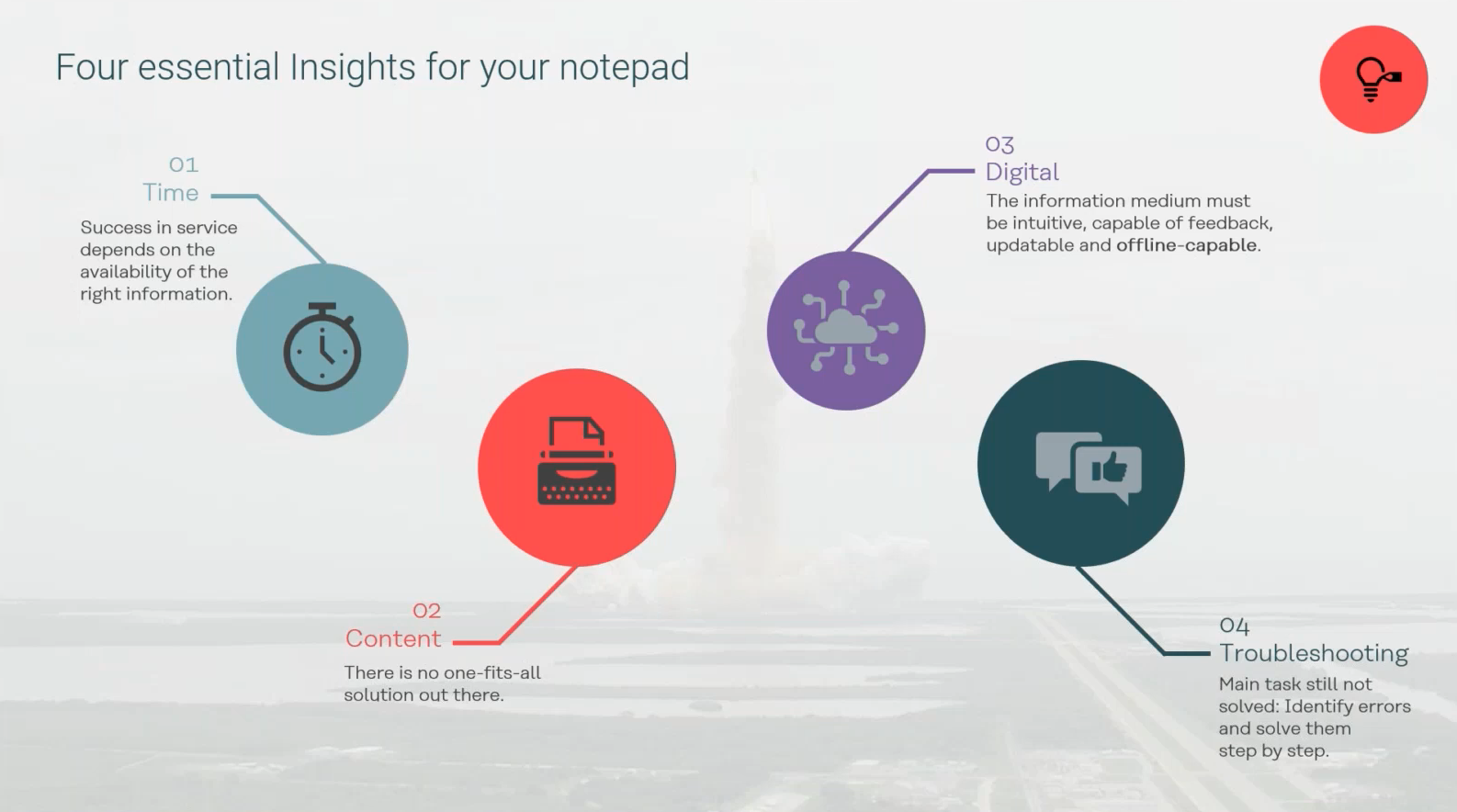Christopher Rechtien, Innovation Manager at Kothes, recently joined Fluid Topics’ CEO Fabrice Lacroix for a one-hour webinar to discuss “Research Findings: How Tech Doc Fails Service Technicians. And How to Fix it.” The conversation created a space to explore ways companies can improve their service efficiency through better content delivery.
For manufacturers, the efficient installation and maintenance of their machines, systems, and technical products are essential. This means field technicians need the right service information, at the right time in order to solve their tasks quickly and reliably – otherwise risking expensive production downtimes. But let’s face it: the service technicians’ experience with technical documentation is not at all what you, knowledge and product teams, had expected.
The latest Insight-Report Service explored during this webinar highlights the top pain points service teams face in their daily work with product documentation and uncovers sometimes-surprising learnings on what they really miss. Here is a recap.
Pain Point #1: Service technicians waste time searching for information
Let’s start with the technician’s most obvious pain point: time spent searching for information. According to the report, over 80% of service technicians spend between 30 minutes and 2 hours per day searching for the right information to complete their service tasks with 10 % spending more than 2 hours a day. Talk about efficiency!
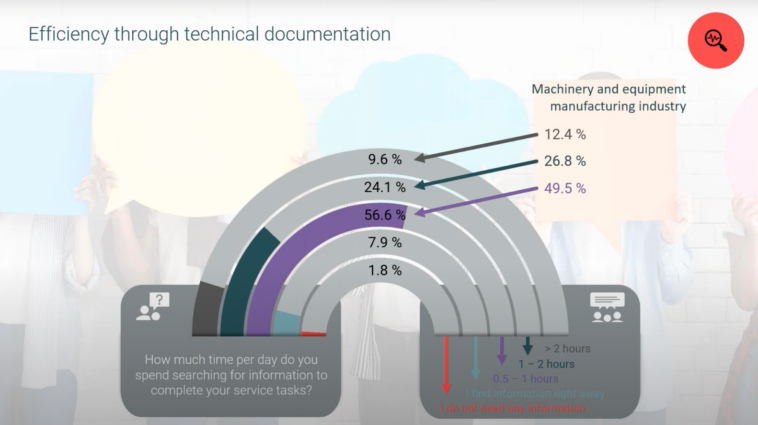
Service technicians may need to consult equipment manuals, technical documents, or other resources to troubleshoot issues or identify the correct replacement parts. However, more often than not, they struggle to navigate complex documentation or locate the specific information they need. As a result, business objectives like reduced time to service, improved first-time fix rates, utilization, and even retention take a big hit.
The Insight-Report Service also showed that almost 60% of the time, technicians just don’t know where to search, and in 40% of cases it’s just not clear how to search for the information. These results are corroborated by the live poll launched during the webinar.
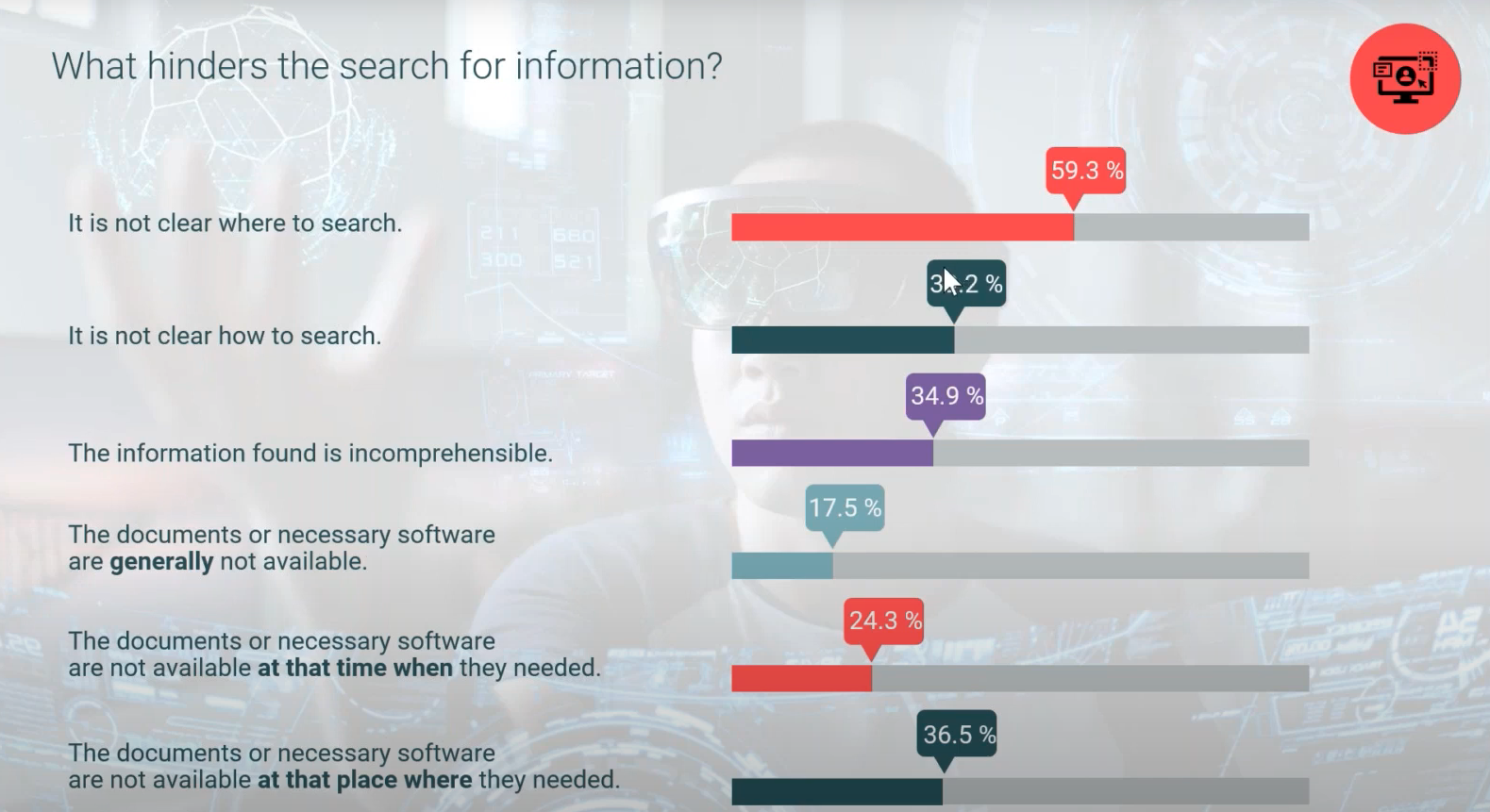
As Rechtien put it, “Companies often have a lot of systems that have different levels of updates. Sometimes you don’t know where to look to have the right up-to-date information and you don’t know what you should use to find it.”
Pain Point #2: Lack of information influences the first-time fix rate
The first-time fix rate is a critical performance metric for service organizations, as it measures the percentage of repairs that are completed on the first visit to a customer’s location. A key factor that can impact the first-time fix rate is the availability of accurate and comprehensive information. If service technicians do not have access to the necessary information, they may battle to diagnose the problem correctly or identify the correct solution.
In the report, technicians were asked “How often did the lack of information lead to service cases not being solved on the first call?”. In 95% of cases, technicians had to plan additional visits to the customer’s location because they did not have the right information on hand, increasing the costs and negatively impacting customer satisfaction.
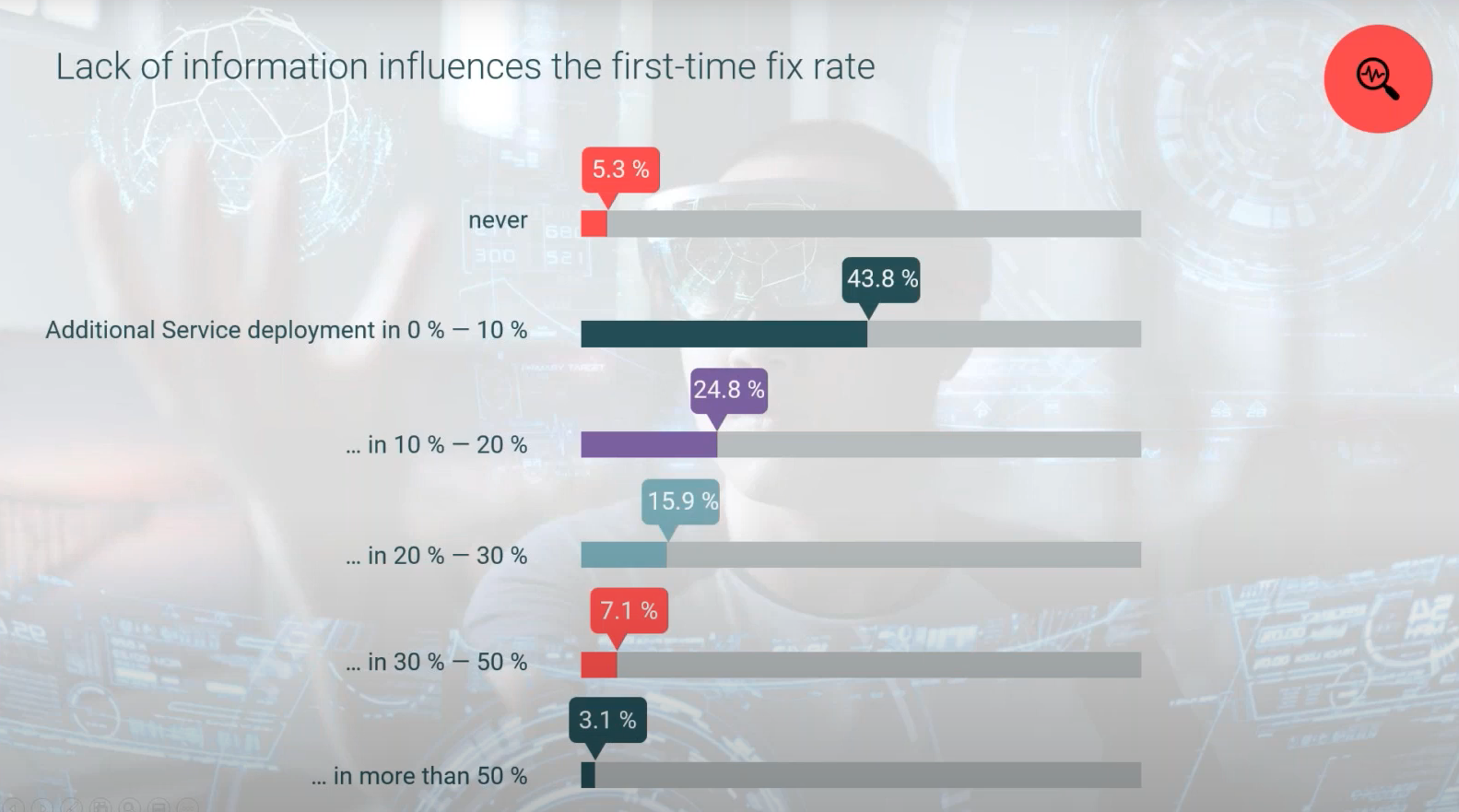
Additionally, almost 50% of technicians reported that step-by-step procedures for repair tasks were missing, and 32% emphasized that troubleshooting information was also missing.

The findings underscore the importance of clear and concise documentation and support resources in technical fields to ensure efficient and effective work processes.
Pain Point #3: Documentation is not always suitable for the “field”
In many instances, field technicians are faced with poor connectivity or no network coverage and may not always be able to connect to their online documentation portal. The Insight-Report Service reported that almost 70% of field technicians did not have a proper internet connection to access the required information – repair manuals, schematics, or troubleshooting guides – to complete a task.
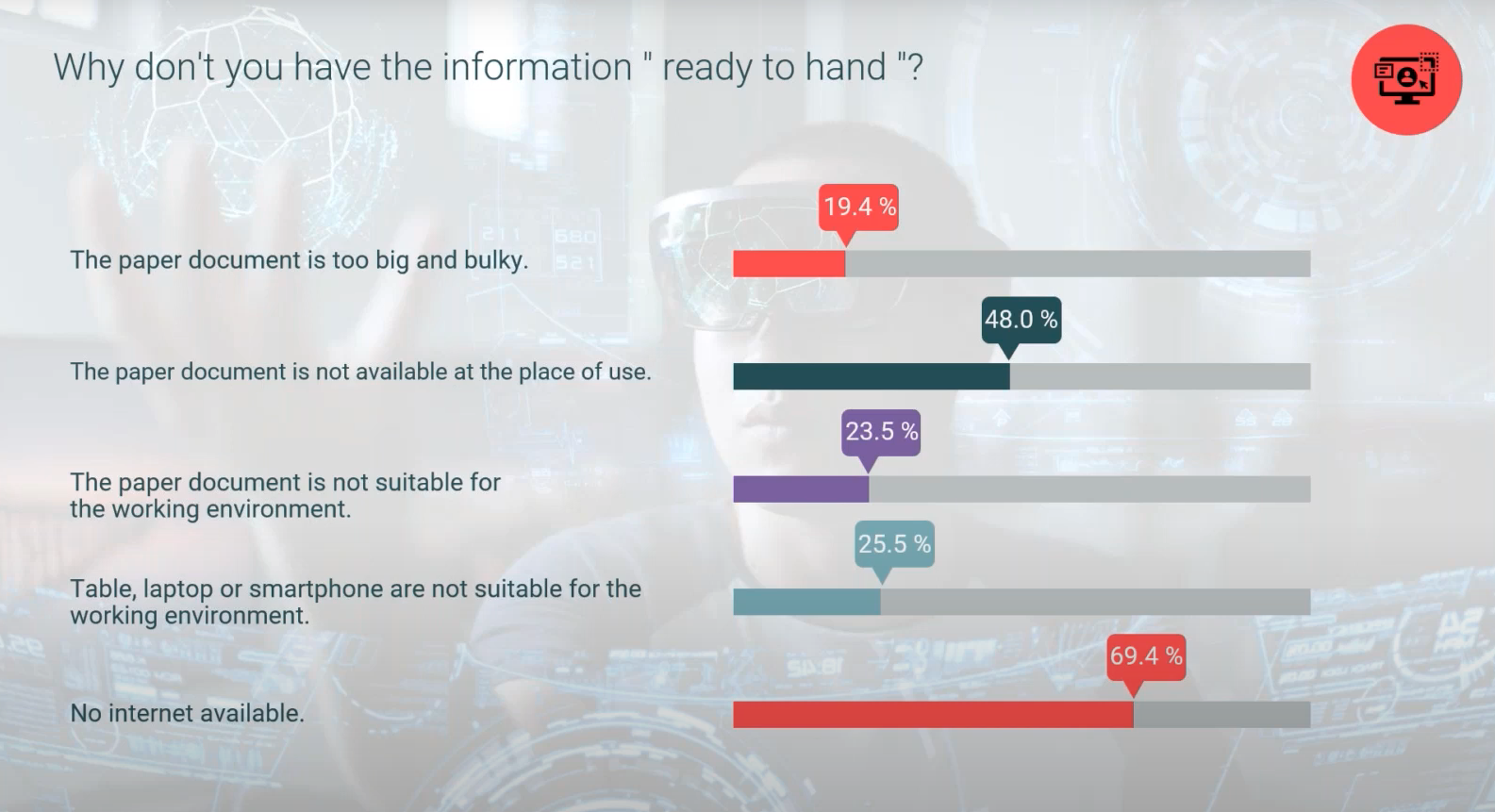
The inaccessibility to documentation often leads to delays in finishing these tasks, as technicians may need to spend more time searching for the right document or may even need to request assistance from their colleagues.
On top of that, most organizations produce and store their technical documentation in multiple systems. Granting access to all these different systems, in particular beyond the internal network, is a headache.
During the webinar, Rechtien insisted that “the audience and the use case you need to solve will determine the technology that should be used.” Therefore, companies must find solutions to ensure that technicians have access to their documentation both online and offline.
How to Overcome These Challenges
From Paper-Intensive to Digital Sources of Information
For many years, the field service management industry has relied on a paper-based management system.
Following this report, Rechtien stated that “Digital is a good way to build, manage and deliver information. Service companies should create a digital-first content experience. »
In over 53% of cases, technicians would rather use an online documentation portal. But 70% of information is still delivered via PDF downloads. For Fabrice Lacroix, the main reason is that “people don’t have the right alternative yet to get rid of PDFs.”
Let Technical Writers and Service Technicians Interact
The report showed some interesting facts about content collaboration:
- 90% of field technicians currently make their own notes
- 32% would like to make comment on a digital portal
- 28% would like to rate the documentation on a digital portal
- 27% would like to give one-off feedback after the content has been created
As Rechtien said “Technical writers and service technicians actually want the same thing. Technical writers would like feedback to improve their documentation and service technicians would like to give feedback and share their knowledge.”
Service technicians work directly with the products or services that technical writers are documenting, so they have first-hand knowledge of any issues or challenges that customers may face. By collaborating with service technicians, technical writers can gain valuable insights into how to improve their documentation and make it more user-friendly.
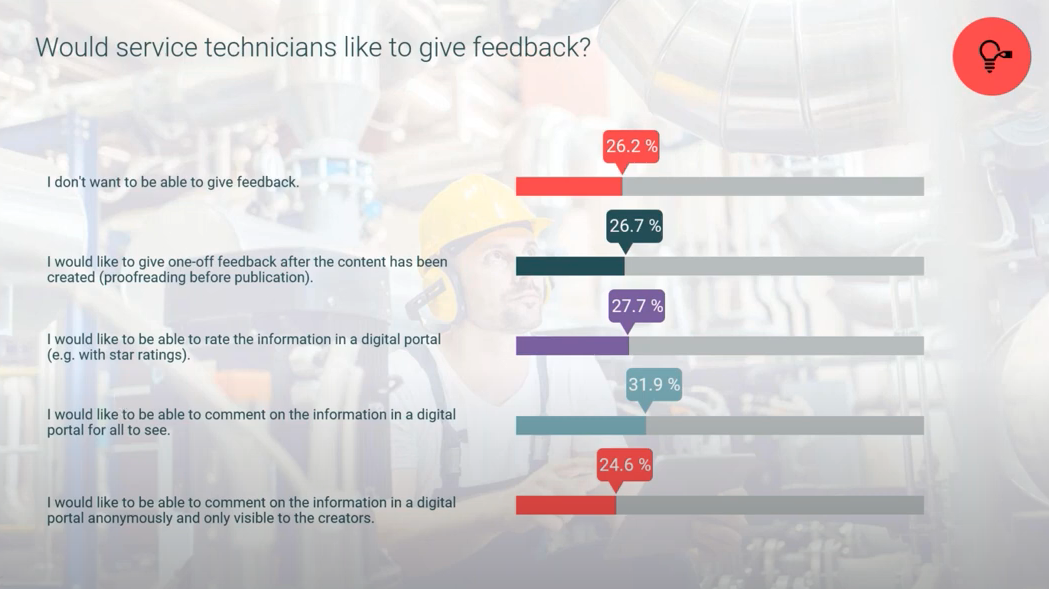
Getting Content Delivery Right
The challenges highlighted by the Insight-Report Service can be solved by having the right technology in place. A Content Delivery Platform such as Fluid Topics has already revolutionized the way service technicians access and use technical documentation.
But Fabrice Lacroix is puzzled: “It’s a matter of technology adoption. The tools are available but companies are still struggling with these challenges. For example, with Fluid Topics, technicians can find their content in a matter of seconds and are able to interact with the documentation itself. ”
In fact, as a software solution, Fabrice explains that “Fluid Topics is able to ingest any type of content and create a unified knowledge repository in which people just know where to look.”
Fabrice concluded by demonstrating that Fluid Topics is not just another software solution. He called it a workplace. “We have implemented digitally the tools that people used on paper. They can easily share knowledge with technical writers, comment, or bookmark content for the next time they need it. »
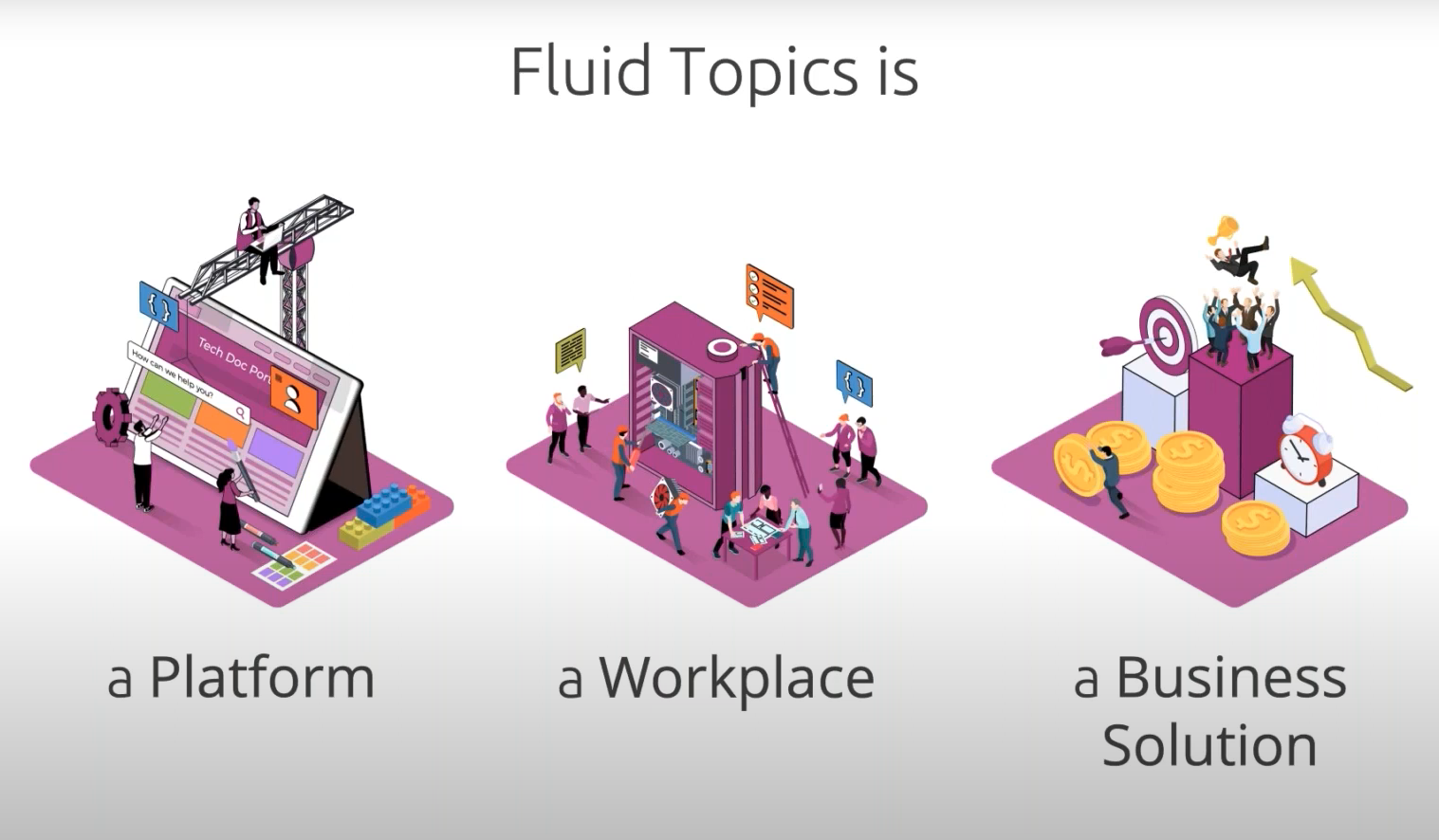
Final Thoughts
Over the course of an hour, Christopher and Fabrice also deep-dived into the information that field technicians deemed necessary such as step-by-step procedures for repairs and maintenance, or diagrams. They agreed that while this type of content was the most helpful to technicians, it was also the most time-consuming to produce for technical writers.
If you missed the live webinar and would like to get a better picture of the report, we’ve got you covered! Watch the webinar on-demand now and explore ways to improve the field service experience with documentation.
